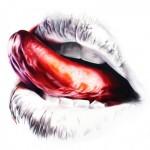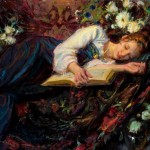Surrealism was a modern idea started in the late 1910s as a literary movement. Early Surrealists were preoccupied with exploration of a new way of expression called – automatism, or automatic writing.
This type of writing was conceived upon the new psychoanalytical ideas of Freud, and it was supposed to release the subconscious. 1924 is usually considered the official starting year of the movement, because that year André Breton’s Manifesto of Surrealism was published. Soon after, the movement spread and became an international intellectual and political tendency.
André Breton was a schooled psychiatrist, but also a poet and art critic. He associated with French poets Louis Aragon, Paul Éluard and Philippe Soupault, and they were all under the impact of Sigmund Freud, especially his dream studies, and the political theories of Karl Marx. They employed free association of Freud in their poetry and prose writings, delving into the intimate world of mind, which was impermeable until then due to the strict social etiquette. Their pieces have proven to be entirely surprising and unexpected images of inner thoughts, often irrational and whimsical.
Therefore, the first Surrealists were poets, and not painters. In fact, these poets were quite reluctant to join the visual artists in the beginning, because they saw painting, drawing and sculpture as limited due to the visual medium, and unfit for spontaneous and unrestrained expression. Still, they did not diminish visual arts entirely. They revered artists such as Giorgio de Chirico, Pablo Picasso, Francis Picabia and the first conceptual mind, Marcel Duchamp. The Surrealist poets thought of their art to be provocative and analytic, free of the imposed rules of tradition. Andre Breton even published reproductions of Picasso in the leading Surrealist magazine – La Révolution Surréaliste, and he organized art exhibitions in 1925.
The first Surrealist visual artists were Max Ernst from Germany, André Masson from France, Joan Miró from Spain and Man Ray from the USA. Early on, they experimented with Surrealistic techniques of drawing, collage, photography and photomontage. Their works were showing curving, strange, lined forms, unreal shapes and symbolic figures, all of which were products of an uninhibited mind. Breton thought Masson’s drawings were the visual parallel of his poetry. Painting of Joan Miró from 1928, titled “The Potato,” explores different organic forms and entangled linework creating an imaginary world of fantastic creatures.
Max Ernst was the follower of the Dada movement before he discovered Surrealism. Around 1937, he started investigating two innovative techniques – decalcomania and grattage, both unpredictable. Decalcomania was the process of covering canvas with a thick layer of paint, and then placing paper or aluminum foil on it while it’s still wet. When the paper and foil were removed, before the paint completely dried, an interesting pattern would remain – the foundation for the new painting. Grattage stood for throwing pigment onto canvas, after it is put on a textured surface, again leaving an interesting pattern. Ernst employed these two techniques in his iconic painting “The Barbarians”.
Belgian painter Rene Magritte relocated to Paris from Brussels in 1927. He instantly became one of the leading figures of the Surrealist movement. His work was impacted by Giorgio de Chirico, and Magritte painted beautiful images often erotic in content, and placed in an oneiric landscape. His artwork marked a split between the visual automatism of Andre Masson and Joan Miro, and a new expression in Surrealism, which was based on illusionism. The same kind of illusionistic surreal painting was performed by Salvador Dali, Paul Delvaux and Yves Tanguy. It is safe to say that illusionistic Surrealists were largely inspired by their predecessor, Giorgio de Chirico.
Salvador Dali was, and is still today, one of the most famous artists in history. In 1929, he moved to Paris from his native Spain and created his first Surrealistic paintings. He built his style following Magritte’s irrational paintings, and depicted personal sexual innuendo. He used Freudian symbols to depict his desire and frustrations, and to unleash his unconscious into large, imaginative and often outrageous paintings.
Breton held Dali in the highest regard, and in the Second Manifesto of Surrealism from 1930, he commended his representations of the unconscious. The two great artists started working together on a publication called Minotaure, a Surrealist magazine issued in Paris.
The Surrealist movement in Europe thrived until the World War II. It fell apart as the war approached. A lot of the influential artists fled from Europe to New York, and spent the war there. This group included Breton, Dali, Ernst, and Masson among others. Across the Atlantic, the movement was revived, with the help of Peggy Guggenheim and Julien Levy Galleries. At the start of the 1940s, it has even reached Mexico, as Breton organized the fourth International Surrealist Exhibition in Mexico City. This exhibition is of great importance, as it involved Frida Kahlo and Diego Rivera, although neither of them belonged to the movement officially.
Surrealism was one of the movements in history of art that has left the deepest marks of the art evolution. It has brought great innovations in techniques and methods of artistic process, new approach to the visual, the renunciation of traditional conventions and an array of free thinking ideas. Although the movement was not adopted by new artists after the war, some of the Abstract Expressionists found their base in the realm of Surrealism.
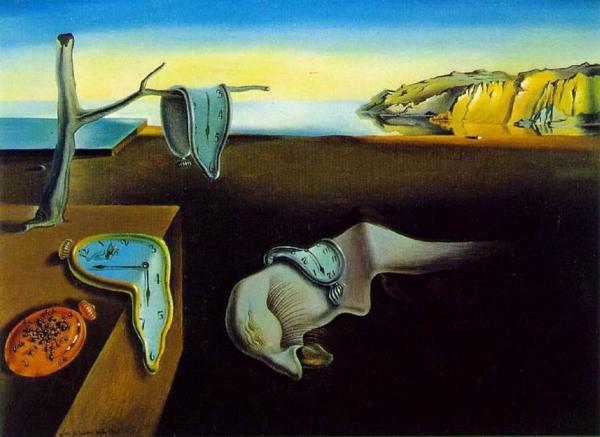
Salvador Dali – The Persistence of Memory, 1931
Perhaps the most iconic Salvador Dali Surrealistic painting of all, it embodies the duality of softness and hardness, symbolizing the relativity of space and time, largely leaning onto Einstein’s Theory of Relativity in essence, although Dali has revoked the Camembert cheese melting in the sun when talking about this piece.
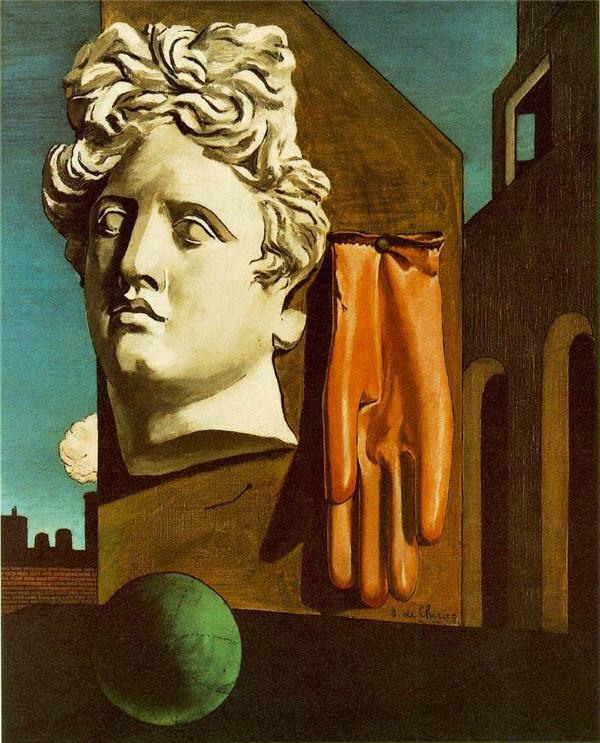
Giorgio De Chirico – The Song of Love, 1914
It is the exemplary work of metaphysical painting De Chirico founded. This is one of the most famous paintings created by the Italian master, and it is usually considered the pre-surrealist work, because it was painted ten years before Breton established the style.
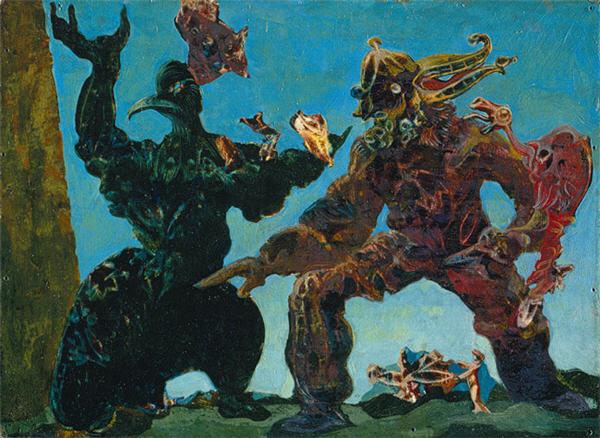
Max Ernst, The Barbarians, 1937
The deserted, apocalyptic landscape is host to two figures, shaped as mixture of human and animal form, fighting each other. The theme of violence was often found in the art of Surrealists.
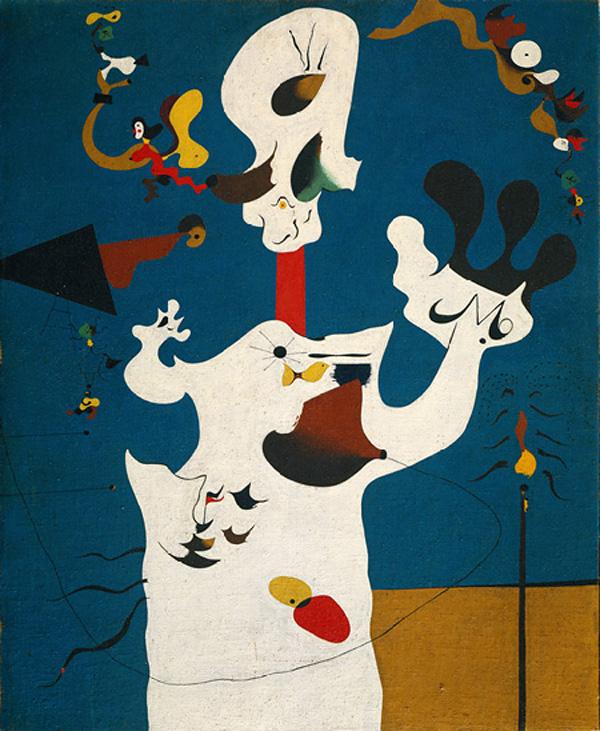
Joan Miro – The Potato, 1928
The automatized representation of a giant woman, assembled of associative shapes and pieces. The painting is one of the most famous works of Miro, and it is named per the potato-shaped brown lump, serving as, presumably an eye, on a woman’s forehead.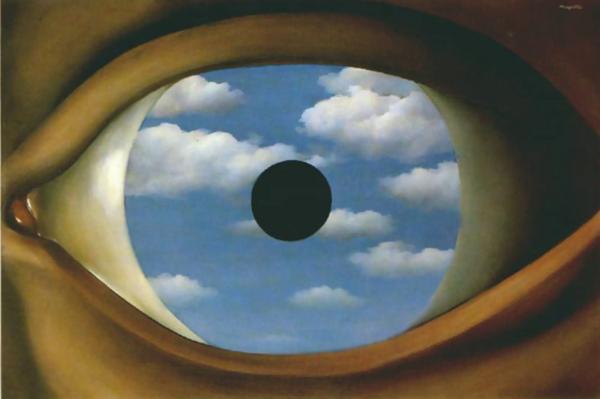
Rene Magritte – False Mirror
One of the most famous paintings by Rene Magritte. Here, the artists insinuates how human vision is limited, where mirror signifies a physical reflection, while the eye is the symbol of selective and subjective personal view. It is layered with meaning, as an eye can be looked by, looked through and looked in.
Andre Masson – Gradiva, 1939
An interpretation of an ancient relief from Pompeii, Gradiva, that impressed the Surrealists, after Sigmund Freud published an essay inspired by the piece. One of the feet, the erect one, references the ancient relief, today found in the Vatican Museum.
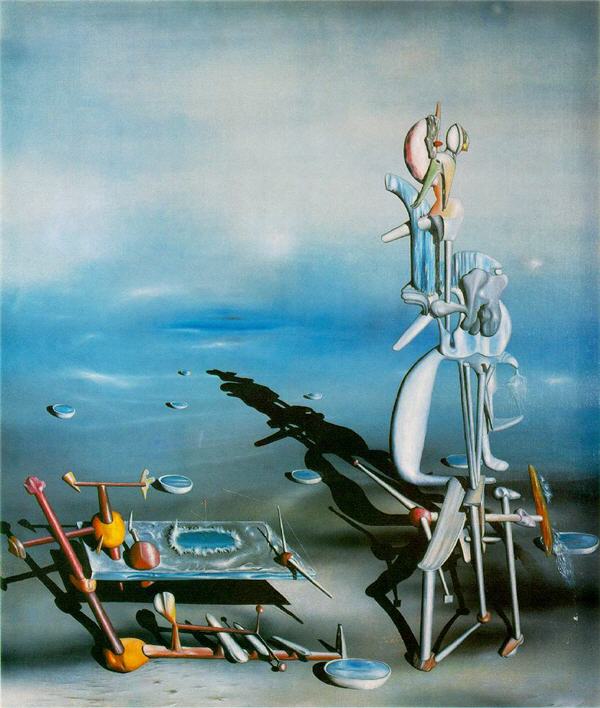
Yves Tanguy – Indefinite Divisibility, 1942
A curious turn on association and subconscious. The mystery of the painting leaves it open to interpretation, with hints of uncertainty in the blurred horizon and domination blue palette.
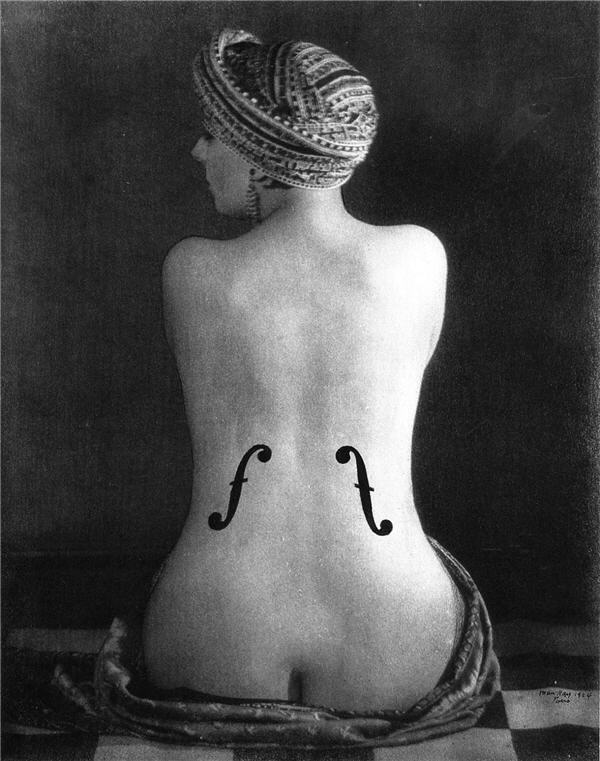
Man Ray – Kiki de Montparnasse Le Violon d’Ingres, 1924
Man Ray was infatuated by Kiki, who was his companion and his muse. He was also a pioneer of Surrealist photography. Here he captured his beloved, turning her into a beautiful object, “le violon” as depicted by the famous painter Dominique Ingres.
Paul Delvaux – Great Sirens, 1947
As a Belgian, Delvaux was under the great influence of Rene Magritte. This painting evokes ancient theatre with fantastic beings, as the artist imagined it, and not as if it would have looked, if it ever existed.
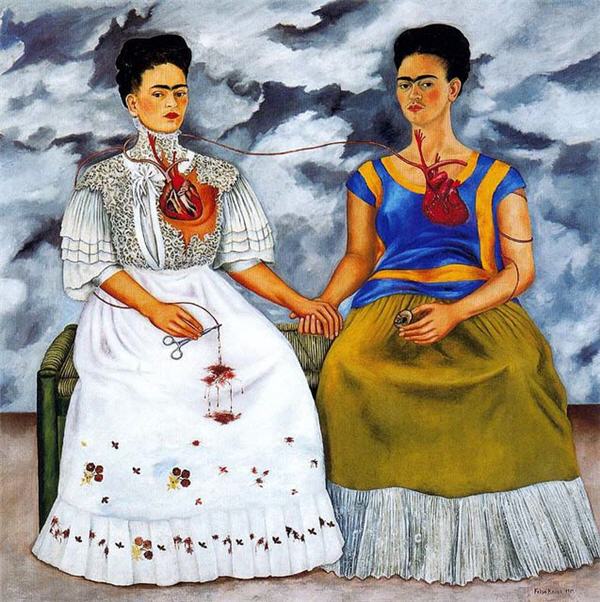
Frida Kahlo – Two Fridas, 1939
Frida wrote in her diary that this double-self portrait was inspired by an imaginary childhood friend she had. It represents two personalities of the painter. Here she portrays her two natures, the tame and the wild one, as both hearts are exposed evoking the excruciating pain she was in. Frida Kahlo produced a number of works under the influence of European surrealism.

